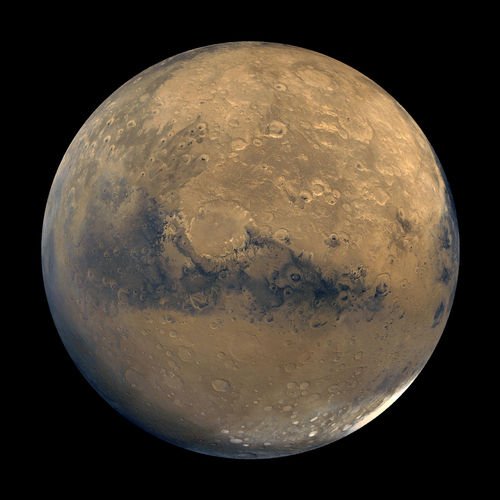Growing Food on Mars
Humanity must spread out if it is to survive. This means we must be looking for other options.
Growing plants on Mars has been popularized by books and movies like The Martian, but how well would it really work? At the surface Mars only has 38% the gravity of Earth. Mars also has a small percentage of the air pressure and no liquid water. Growing crops in these conditions would require complicated tools.
Bio-Domes
The atmospheric pressure on Mars is about 600 Pascals. The Earth is 101,000 Pascals, almost 170 times that of Mars.[1] The pressure is far too low for any crops we grow. The solution to this problem is bio-domes. It turns out bio-domes can solve many of the problems with growing crops on Mars.
Bio-domes will be able to control the temperature, the temperature regularly drops below negative 100 degrees Celsius. Luckily since the atmosphere is so thin a bio-dome would be easier to keep cool than it would be on Earth. Most of the heat loss will be through the ground. This problem could be easily solved with an air gap. [2]
The soil will be another problem. The Bio-domes will allow people to monitor and clean the soil brought in for plants. On mars there is no Bactria in the soil and it is filled with perchlorates. Soil bacteria aids plant growth on Earth. These bacteria help prevent disease on the roots, help with nutrient uptake, and sometimes create nutrients themselves for the plants. Luckily bacteria often survive space better than plants and animals, and they could be carried over if needed. Calcium perchlorate is not healthy for human consumption. In fact even small amounts can be deadly . The soil is 0.5% calcium perchlorate, and small particles thrown up by wind actually pose a health risk to any colonizers. Some types of bacteria use perchlorates as a source of energy and can be used to clean the soil and water. Letting the bacteria sit in a vat of this soil mixed with water could solve this problem. The soil does contain enough nutrients to feed the plants, which means all the problems there are solved. [3][4][5]
The bio-dome can also help fix another problem. Plants need carbon dioxide to survive. The Martian atmosphere is mostly carbon dioxide, but it is too cool and too thin. This carbon dioxide can be collected and brought into the bio-dome to allow the plants to breath.
The Effect of Gravity on Plants
Until recently the effect of gravity on plants was unknown. New research aboard the ISS has shown that processes formerly thought of as being gravity-assisted were natural to plants. Roots still found the soil and went "down" through it. This happened for a combination of reasons including, light avoidance and the presence of dirt and nutrients. It was thought before that the slant of plant roots was due to roots being pushed to the side because of gravity and slanted rocks. This turns out to be false as the roots still slant to the same degree aboard the ISS. This means that the lower gravity of Mars will have no major effect on the plants themselves, because the plants are versatile enough to adapt.[6]
Getting Water on Mars
Plants need far more water than we can take with us to Mars. This means that we will have to find sources of water on Mars. Mars does have ice caps like Earth, but the top layer is often covered by carbon dioxide ice. The carbon dioxide ice melts in the summer and exposes the water ice beneath, which means harvesting water will likely be seasonal. The water ice can get up to two kilometers thick.[7] Liquid water likely has flowed on the surface of Mars, but where it has gone is unknown. There may be large subsurface deposits of ice but scientists have been unable to search for them. This means the ice caps will be the only major source of water.[8]
Growing plants on Mars is possible, but would take huge amounts of effort. Humanity will die out if it can not leave Earth, which means that effort is required to survive whether we like it or not.
Want to learn more science? Subscribe and Upvote!
[1]source[2]source
[3]source[4]source
[5]source[6]source
[7]source[8]source


It is not profitable in small quantities because the trip to Mars is too expensive.
but nice idea
the plants would be food for people living there......
that will work
Nice job, 1 follow for you. :D
thank
Great article. We indeed have to find other places in the universe to move to when the earth is not possible for humans (and animals) to live. Mars seems to be interesting to give humans (and animals) the basic necessities we need, food! Following you!